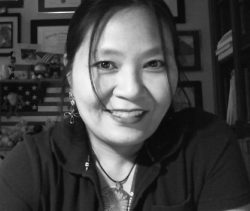ELECTRONIC BOOKS, PRINT BOOKS, and ANTHOLOGIES
Write out a work's title like you would write out a sentence: Capitalize the first word, any proper nouns, and the first word after a colon.
Electronic-only book
Triola, M.F. (2017). Elementary statistics (13th ed.). Pearson. https://www.pearson.com/store/p/elementary-statistics
/P100002509154/9780134462455
Electronic version of a print book
Whitton, N. (2010). Learning with digital games: A practical guide to engaging students in higher education. Routledge.
http://www.amazon.com/Learning-Digital-Games-Practical-Education-ebook/dp/B002NXOS8C
Print book - one author
Whitton, N. (2010). Learning with digital games: A practical guide to engaging students in higher education. Routledge.
Print book - two or more authors
Ruszkiewicz, J.J., & Dolmage, J. (2010). How to write anything: A guide and reference with readings. Bedford/St. Martin's.
Anthology
Gold, M. (Ed.). (1999). The complete social scientist: A Kurt Lewin reader. American Psychological Association.
https://doi.org/10.1037/10319-000
- Provide the editor(s) of the anthology in the author position of the reference.
- The date refers to the year the anthology was published.
Work in an anthology
Lewin, K. (1999). Group decision and social change. In M. Gold (Ed.), The complete social scientist: A Kurt Lewin reader
(pp. 265–284). American Psychological Association. https://doi.org/10.1037/10319-010
(Original work published 1948)
- Works that have been published elsewhere before appearing in an anthology are treated as being republished rather than reprinted.
- For the in-text citation, since the date of the individual work and the anthology are likely different, use both dates, respectively: Narrative citation: Lewin (1948/1999); Parenthetical citation: (Lewin, 1948/1999)

